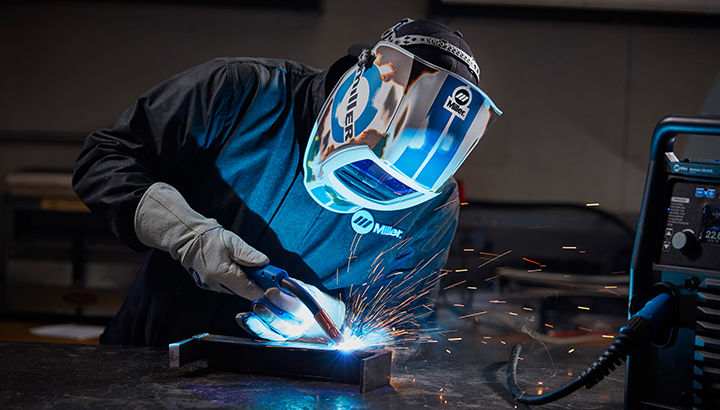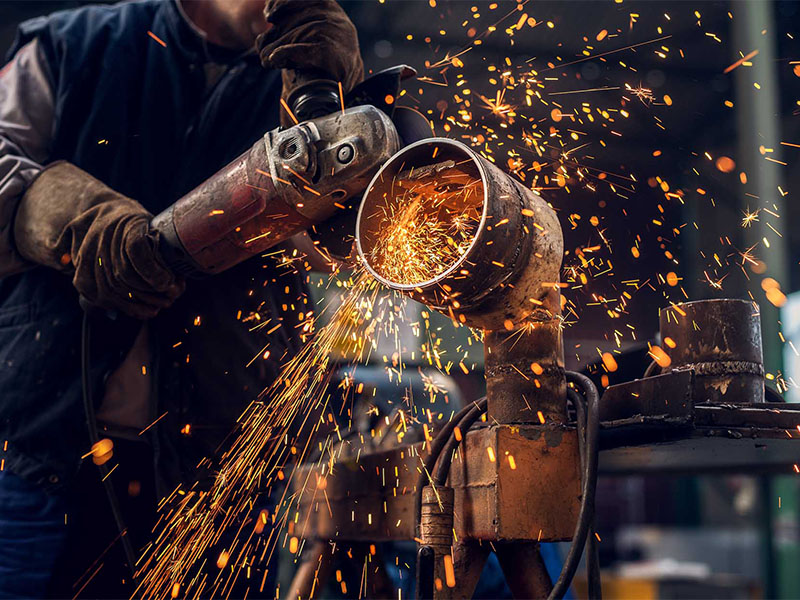Usual Welding Repair Work Issues and Just How to Address Them Effectively
Welding repairs often come across a series of concerns that can threaten the honesty of the end product. Common issues include poor penetration, porosity, and imbalance, among others. Each flaw provides one-of-a-kind challenges that need certain strategies for resolution. Understanding these problems is crucial for welders intending to improve their end results and skills. This discussion will explore these typical welding repair work problems and reliable methods to address them.
Poor Infiltration
Poor infiltration happens when the weld steel falls short to totally fuse with the base material, resulting in weak joints and prospective architectural failings. This concern frequently stems from not enough heat input, inaccurate electrode angle, or incorrect welding rate. Welders might encounter inadequate infiltration as a result of a mistake of the essential specifications for a certain material density or type. Furthermore, contamination on the base product's surface area can hinder effective bonding, worsening the trouble. To attend to inadequate infiltration, welders should ensure appropriate setups on their equipment and preserve a clean job surface area. Normal evaluation of welds is advised to recognize any type of shortages early, enabling prompt adjustments and the avoidance of jeopardized architectural honesty in welded assemblies.
Porosity
Porosity is a common defect in welded joints that shows up as little gas bubbles trapped within the weld steel. This defect can compromise the stability of the weld, bring about minimized strength and prospective failure under tension. Montana Mobile Welding and Repair Belgrade Fabrication. Porosity normally occurs from contamination, wetness, or incorrect welding techniques, which allow gases to get away right into the molten weld swimming pool. To address porosity, welders must assure appropriate surface preparation, preserve a clean workplace, and use appropriate welding criteria. In addition, selecting the right filler material and securing gas can alleviate gas entrapment. Routine assessment and screening of welds can assist recognize porosity early, guaranteeing prompt rehabilitative actions are taken, therefore maintaining the top quality and integrity of the welded framework
Imbalance
Misalignment in welding can occur from numerous aspects, including incorrect configuration and thermal growth. Recognizing the origin is vital for reliable resolution. Numerous modification strategies are readily available to realign parts and ensure structural stability.
Causes of Imbalance
Welding imbalance often stems from a variety of underlying problems that can jeopardize architectural stability. One key reason is incorrect fit-up of components before welding, which can cause spaces and irregular surface areas. Variations in thermal development during the welding process can additionally lead to distortion, particularly if the materials being signed up with have different coefficients of expansion. In addition, inadequate securing and fixturing may fail to hold elements firmly in location, causing motion throughout welding. Poorly maintained devices, including welding equipments and devices, may present disparities in the weld bead, further adding to misalignment. Ultimately, operator mistake, originating from insufficient training or experience, can also play a considerable duty in developing misaligned welds.
Adjustment Strategies Available
Attending to misalignment efficiently needs a combination of corrective techniques tailored to the particular issues at hand. One usual approach is the use of components or jigs to hold elements in the right setting during welding, ensuring constant positioning. Furthermore, pre-heating the materials can help in reducing distortion and improve fit-up. For considerable imbalance, mechanical adjustment methods, such as making use of hydraulic jacks or clamps, can be utilized to deal with the position before welding. Post-weld warmth treatment may additionally be necessary to ease stress and anxieties brought on by misalignment. Ultimately, careful evaluation and modification throughout the setup stage can avoid imbalance concerns from ending up being substantial issues, advertising a smoother welding procedure and enhancing overall architectural honesty.
Distortion
Distortion is an usual difficulty in welding that can occur from various elements, including uneven cooling and heating. Comprehending the reasons for distortion is essential for executing reliable prevention techniques. Resolving this concern not just enhances architectural stability but also boosts the overall top quality of the weld.
Reasons for Distortion
When based on the extreme heat of welding, products usually undergo changes that can lead to distortion. This phenomenon mainly occurs from thermal expansion and tightening throughout the welding process. As the weld location warms up, the material expands; upon cooling, it contracts, which can create inner stress and anxieties. On top of that, irregular home heating across a workpiece can intensify these anxieties, leading to warping or flexing. The kind of material also plays a significant read more role; steels with differing thermal conductivity and coefficients of growth might respond in a different way, bring about unpredictable distortions. Additionally, poor joint layout and inadequate fixturing can add to misalignment throughout welding, raising the probability of distortion. Comprehending these reasons is necessary for effective welding repair work and avoidance methods.
Prevention Techniques
Reliable prevention strategies for distortion throughout welding concentrate on regulating warmth input and making certain proper joint layout. Keeping a regular warmth input helps to lessen thermal growth and tightening, which can bring about distortion. Making use of strategies such as preheating the work surface can likewise reduce the temperature slope, promoting uniform heating. Additionally, picking suitable joint styles, such as T-joints or lap joints, can enhance security and decrease tension concentrations. Carrying out proper fixturing to safeguard the work surfaces in place better help in keeping alignment throughout the welding process. Lastly, staggered welding sequences can distribute heat a lot more evenly, avoiding localized distortion. By applying these strategies, welders can significantly decrease the chance of distortion and enhance the general top quality of their welds.
Cracking
Splitting is an usual problem come across in welding repairs, typically arising from numerous factors such as incorrect air conditioning prices, material option, or inadequate joint preparation. The occurrence of cracks can significantly endanger the stability of the weld, resulting in prospective failures throughout operation. To resolve this concern, welders need to first evaluate the root triggers, making sure that materials are suitable and properly picked for the certain application. In addition, managing the cooling price during the welding process is crucial; fast air conditioning can cause stress and anxiety and bring about splitting. Proper joint layout and prep work additionally add to decreasing the danger. Applying these approaches can improve weld high quality and durability, ultimately lowering the probability of cracking in finished pvc welding weldments.

Insufficient Blend
A substantial issue in welding repair work is insufficient fusion, which happens when the weld steel does not properly bond with the base material or previous weld passes - Belgrade. This problem can lead to weaknesses in the joint, possibly endangering the stability of the bonded structure. Elements adding to incomplete combination consist of inadequate heat input, improper welding strategy, and contamination of the surface areas being signed up with. To address this concern properly, welders ought to assure appropriate pre-weld cleansing and surface area preparation, along with adjust their welding specifications to achieve appropriate infiltration and blend. Normal examination during the welding procedure can also help determine incomplete fusion early, enabling prompt corrective procedures to boost the total high quality of the weld
Overheating
While welding repair work can boost architectural integrity, overheating presents a significant challenge that can cause material degradation. Excessive warm during welding can modify the mechanical residential properties of metals, leading to minimized strength, boosted brittleness, and warping. This phenomenon is particularly critical in high-stress applications where architectural dependability is extremely important. Determining getting too hot can include aesthetic inspections for discoloration or distortion, as well as monitoring temperature level during the welding procedure. To alleviate the risks related to overheating, welders should use proper methods, such as regulating warmth input, changing travel speed, and making use of appropriate filler materials. In addition, applying pre- and post-weld warmth treatments can help recover product homes and improve the overall high quality of the repair, guaranteeing long-lasting performance and safety and security.
Regularly Asked Inquiries
What Are the Usual Indicators of a Welding Flaw?

How Can I Examine My Welds for Quality?
To check try here welds for quality, one can utilize aesthetic evaluations, ultrasonic testing, and radiographic approaches. Each method guarantees architectural integrity, identifies defects, and confirms adherence to defined requirements, eventually boosting the integrity of the bonded joints.
What Security Preventative Measures Should I Take While Welding?
When welding, one ought to prioritize safety by wearing proper individual protective equipment, ensuring proper ventilation, securing flammable materials away, preserving a clean work area, and knowing surroundings to avoid injuries and accidents.
Can I Repair a Weld Without Remodeling the Entire Joint?
Fixing a weld without redesigning the whole joint is feasible, depending upon the damages (Montana Mobile Welding and Repair Belgrade). Methods such as grinding, including filler product, or using a welding procedure can successfully attend to certain defects while preserving the surrounding structure
What Tools Are Essential for Reliable Welding Services?
Vital tools for efficient welding repair services include a welding equipment, wire brush, mill, safety gear, clamps, and filler materials. Each device plays an essential function in making sure quality and safety and security during the fixing procedure. Porosity normally occurs from contamination, wetness, or improper welding methods, which permit gases to leave into the molten weld swimming pool. Poorly conserved equipment, including welding makers and tools, may introduce inconsistencies in the weld bead, more adding to imbalance. When subjected to the intense heat of welding, materials frequently undertake modifications that can lead to distortion. Fracturing is a typical concern experienced in welding fixings, typically resulting from numerous factors such as incorrect air conditioning prices, material selection, or poor joint prep work. A considerable problem in welding fixings is insufficient fusion, which happens when the weld metal does not adequately bond with the base material or previous weld passes.
Comments on “5 must-know weld defect solutions from Montana Mobile Welding and Repair Belgrade Welding”